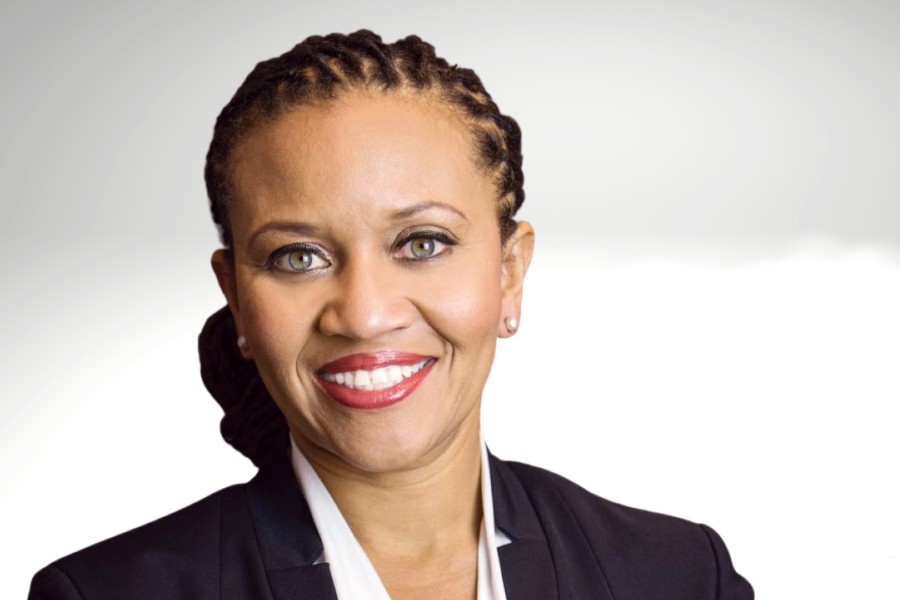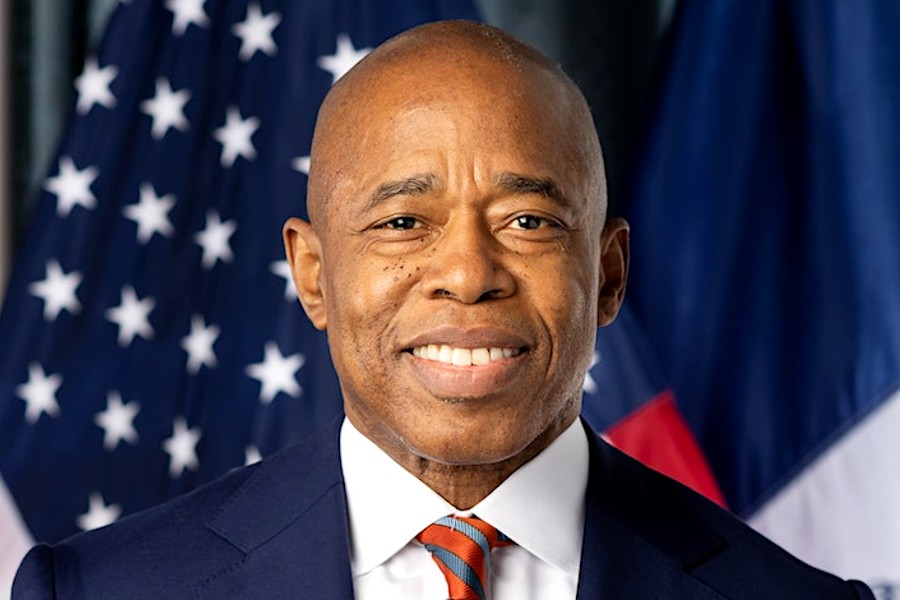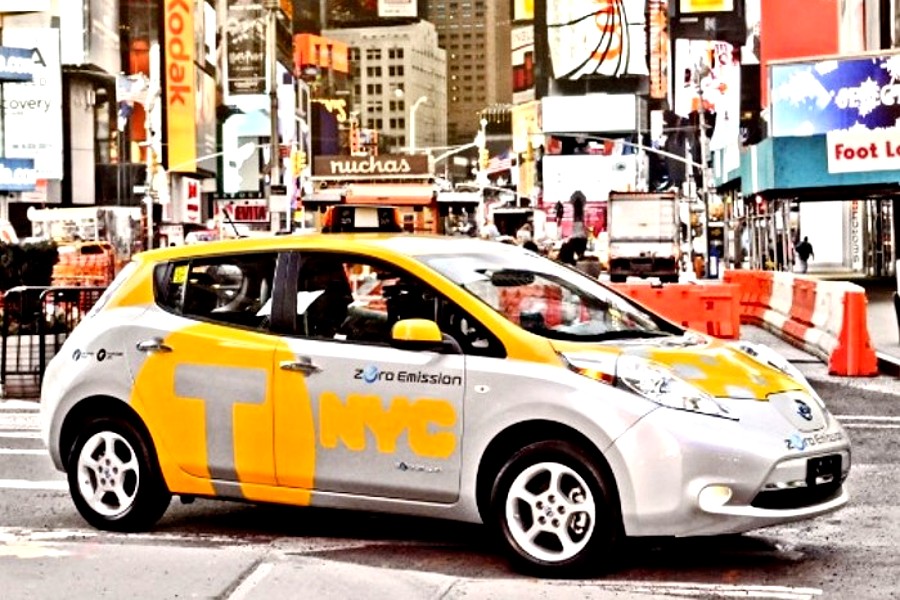 Mayor Bill de Blasio and New York City Department of Transportation (NYC DOT) Commissioner Hank Gutman today released Delivering New York: A Smart Truck Management Plan.
Mayor Bill de Blasio and New York City Department of Transportation (NYC DOT) Commissioner Hank Gutman today released Delivering New York: A Smart Truck Management Plan.
A new freight management plan to improve New York City’s freight management and truck safety.
The announcement continues Streets Week!, a suite of transportation, traffic safety, and open space policy announcements to double down on the transformative Vision Zero initiative.
Among major initiatives, new innovative policies will reduce truck congestion; expand curbside space for delivery; encourage the transition to smaller, greener trucks; and improve the safety and efficiency of New York City’s truck routes.
“Rebuilding a cleaner, fairer, and greener city mean rethinking the way trucks move through our streets. As more goods than ever flow through our city, it’s time for a smart, thoughtful freight management approach that keeps our communities safe and livable,” said Mayor Bill de Blasio. “Delivering New York charts a path toward a future with fewer and smaller trucks, which will ease congestion, reduce greenhouse gas emissions, and protect our infrastructure.”
“Safer and more efficient freight management will advance New York City’s climate goals, tackle congestion and noise pollution, and make our roads safer for pedestrians and cyclists,” said Deputy Mayor for Operations Laura Anglin. “This plan will advance an important conversation for the future of our city – one made even more urgent as deliveries become even more central to our local economy.”
“Just as we are reimagining how people move to reduce our dependence on private cars, we must reimagine how goods move to reduce our dependence on large diesel trucks,” said NYC DOT Commissioner Hank Gutman. “We cannot solve this problem with more big trucks, which endanger our aging infrastructure, pollute our air and contribute to climate change. When they travel on residential streets where they do not legally belong, they present safety dangers and harm our quality of life. In Delivering New York, we show how we can and must expand alternatives to bringing goods to and from our City – from loading zones to dramatically expanded overnight deliveries — and much more.”
“Managing truck congestion and safety on our streets and focusing our efforts on reducing harmful greenhouse emissions is key to this administration’s freight goals, and today’s announcement is a huge complement to our FreightNYC plan at NYCEDC,” said New York City Economic Development Corporation President and CEO Rachel Loeb. “We look forward to implementing these improvements in partnership with DOT and congratulate Mayor de Blasio and Commissioner Gutman on this huge step as we work to change the way goods move in and out of our city!”
“This plan will fight climate change while making streets safer and the air cleaner for all New Yorkers — especially those in communities historically burdened by truck traffic,” said Ben Furnas, Director of the Mayor’s Office of Climate and Sustainability.“COVID-19 has accelerated a transformation in the way goods move around our city, and the Department of Transportation is rising to the challenge in making sure this transformation is sustainable, healthy, and fair.”
New York City’s freight management challenges have become even greater during the COVID-19 pandemic.
As more New Yorkers have worked remotely and shopped online in the last year, residential freight delivery has increased from 40% of all deliveries citywide to 80%.
The new plan recognizes these transformative shifts and introduces dozens of new strategies and initiatives to help reduce the dependence on large trucks, especially in making “last-mile” deliveries.
Trucks deliver nearly 90% of the city’s goods to businesses and homes throughout the five boroughs.
Without City action, freight movement is expected by 2045 to increase by 68%, potentially adding 44,000 to 75,000 more trucks to the network per day.
Delivering New York complements NYC EDC’s own long-term multimodal freight vision and builds on the foundation of existing freight initiatives outlined in the de Blasio administration’s OneNYC plan, and DOT’s 2016 Strategic Plan.

Major initiatives of the plan target safety, efficiency, sustainability and expanding partnerships/knowledge, and include:
Target 70 Truck Safety Priority Corridors citywide over the next five years
- Truck-involved traffic collisions disproportionately prove fatal. Starting this year, DOT will implement safety improvements on at least 10 truck priority safety corridors each year, as well as set new design standards to enhance truck safety at intersections where a majority of serious crashes occur.
Strengthen Enforcement Efforts: Vision Zero Street Teams Corridor Enforcement and Education Initiatives
- DOT and NYPD will deploy a multi-neighborhood, multi-corridor strategy, targeting one high-crash corridor in all eight NYPD Patrol Boroughs. The 2021 Vision Zero Street Team Corridor program is a joint effort between NYPD and the DOT Safety Education and Outreach and Highway Inspection and Quality Assurance units.
- NYPD will engage in two-week deployments with each Precinct, no fewer than three times per year.
- DOT will safely deploy Vision Zero Street Team outreach effort for one week in every Precinct involved in the program, rotating among Patrol Boroughs. DOT will hand out educational materials to New Yorkers at intersections along the corridors.
- Teams will focus on locations with high incidences of truck-involved crashes. Their work will feature outreach to truck drivers, pedestrians, and cyclists about the obstructed views that are unique to large vehicles when interacting with vulnerable road users.
Efficiency
Update Citywide Truck Network and DOT’s Truck Route Map
- Recognizing the inefficient and often inequitable patchwork quilt of route restrictions, DOT will issue new rules to identify new truck routes across New York City. New routes will fill gaps, allow better distribution, and reduce “dead-ends” that lead to truck trips onto prohibited residential streets. DOT will update its map this year and add on-street signage that better identifies both new corridors and prohibited ones.
Continue and Further Expand Off-Hour Deliveries (OHD) program
- The Off-Hour Deliveries program encourages delivery companies to shift their deliveries to off-peak hours. Deliveries made between 7pm and 6am can help to reduce traffic in the most congested areas of the city. In 2019, Mayor de Blasio set a goal to triple the number of Off-Hour Deliveries from 500 to 1500 locations by the end of 2021 – targeting focus areas in Midtown Manhattan and Downtown Brooklyn.
- DOT will work with DCAS and other City agencies to examine ways the City can lead by example through smart application of procurement policies, making its own freight supply chain cleaner, greener, and more efficient.
Improving Curb Management
- Expansion of Dedicated Commercial Space in Commercial Areas: The increase in truck deliveries has heightened the need for safe and efficient curb access. DOT will increase the number of commercial loading zones citywide with a focus on high-demand Central Business District and outer-borough areas. Increased curb access will reduce conflicts between vulnerable road users and double-parked trucks.
- Expansion of Neighborhood Loading Zone (NLZ) program to residential areas: With a primary focus on narrow streets with bus and bike routes, DOT will double the number of Neighborhood Loading Zones citywide to accommodate the growing market share of e-commerce deliveries in residential areas. To date, 111 zones have been installed in neighborhoods citywide. First introduced in 2019, NLZs discourage double parking by giving delivery and non-commercial vehicles dedicated space at the curb for expeditious loading of goods and passenger pick-up/drop-off activity in residential areas.
Sustainability
Creation of a permanent Commercial Cargo Bike Program
As announced last week, DOT will expand and make permanent its pilot program incentivizing the use of cargo bikes for deliveries in some of the City’s most congested neighborhoods. The program expanded dramatically during the pandemic, growing to over 350 cargo bikes. It will be made permanent by:
- Creating an annual permit for businesses operating five or more cargo bikes for commercial purposes
- Pursuing legislative changes to ensure that wider e-cargo bikes are compliant with State law.
Designate “Green Loading Zones”
- New zones would be dedicated to particular vehicle types and/or reserved for use by particular companies to incentivize electric vehicles, including “Cargo Bike Loading Only” curb regulations.
Continue to expand the NYC Clean Truck Program to industrial business zones citywide
- Begun in 2012, DOT’s Hunts Point Clean Truck program has grown into one of the agency’s great success stories, as companies in the South Bronx replaced over 500 trucks to cleaner and greener vehicles. Under this initiative, DOT will invest $9.8 million in advanced transportation technologies and alternative fuel trucks for other industrial areas, including expanding the use of electric trucks.
Partnerships And Knowledge
Develop “Smart Urban Freight Lab”
- DOT will begin a new internal group to study, test and evaluate innovative last-mile freight strategies, including through the collection of continuous freight data.
Establish off-street freight distribution and consolidation hubs in partnership with private garage operators
- By removing the ‘last mile’ truck delivery from the logistics chain, off-street consolidation helps to reduce roadway congestion and competition for curb access and deliveries during the most congested times of the day. DOT will also continue to work with private property owners throughout the city to develop off-street delivery hubs.
Expand Bridge Strike Reduction Program through signage, pavement markings, & ITS technology
- DOT has worked closely with state partners to reduce bridge strikes, where errant truck drivers can cause millions of dollars of infrastructure damage and traffic congestion when they strike low-clearance overpasses, especially on parkways. DOT will:
- Leverage and strengthen multi-agency coordination with regional enforcement and infrastructure partners (NYPD, MTA, NYSDOT, and PANYNJ)
- Develop digital truck driver resources, targeted radio ad campaigns, and increase awareness through truck associations, rental companies, owner-operators, and conduct outreach to routing and mapping companies.
- Prioritize top 10 frequently hit low bridges citywide, where new signage and pavement markings will be implemented
- Add an over-height detection system along the Belt Parkway, which has some of the most frequently hit low bridges.
“I want to thank Mayor de Blasio, Commissioner Gutman, and the team at DOT for their work on this new freight management plan. The increase in online shopping and deliveries brought on by the COVID-19 pandemic has only made it clearer that the way we handle freight and shipping in most American cities just isn’t working for our 21st-century economy. That’s why I look forward to DOT working with our communities to address and incorporate specific neighborhood delivery and trucking concerns into this plan, and for the Mayor and DOT to work with the Council to pass our package of freight delivery legislation so we can permanently codify these and other important measures for future mayoral administrations,” said Council Member Carlina Rivera.
“It is critical that New York City balances its transportation network because road capacity is already pushed to its limits and traffic congestion is projected to only get worse,” said Liam Blank, a spokesman for Tri-State Transportation Campaign. “We commend Mayor de Blasio and NYC DOT for this new initiative, which will help to reduce congestion, cut air pollution, and save lives.”
“New York City cannot have safe, healthy, and equitable streets without addressing freight deliveries, and Delivering New York can help bring our curb management into the 21st century,” said Danny Harris, Executive Director of Transportation Alternatives. “We are especially pleased to see an emphasis on dedicated loading zones, a key plank of our NYC 25×25 vision for streets, in this report. We applaud Mayor de Blasio and NYC DOT for detailing such a comprehensive plan to tackle urban freight issues and look forward to partnering with them and future administrations to bring these initiatives to life.”
“COVID has reminded us of the critical role the trucking industry and our drivers play in the daily lives of New Yorkers,” said Kendra Hems, president of the Trucking Association of New York (TANY). “Our members are essential in providing food, fuel, medicine and much more, every day to millions of New Yorkers. The Smart Truck Management Plan strikes a balance in improving the efficiency of freight delivery while preserving the quality of life and safety of New Yorkers. I commend Mayor de Blasio and the leaders at the New York City Department of Transportation for their vision and commitment to safety.”
“Transportation is the leading contributor to climate change in the state and as freight deliveries continue to grow, any plan to green the transportation sector must address trucks and cargo,” said Julie Tighe, President of the New York League of Conservation Voters. “The Delivering New York plan will help reduce traffic and increase efficiency while also encouraging a transition to more sustainable transportation technologies. Expanding the use of cargo bikes and investing in electric trucks is a win-win for both pollution and congestion. That’s why we included these types of policies in our New York City Policy Agenda. We thank Mayor de Blasio and Commissioner Gutman for making our streets clearer and greener. We look forward to working with stakeholders to continue reimagining freight travel in the city.”
Become a Harlem Insider!
By submitting this form, you are consenting to receive marketing emails from: Harlem World Magazine, 2521 1/2 west 42nd street, Los Angeles, CA, 90008, https://www.harlemworldmagazine.com. You can revoke your consent to receive emails at any time by using the SafeUnsubscribe® link, found at the bottom of every email. Emails are serviced by Constant Contact








